Traditional Swedish Semlor (Swedish Shrove Tuesday Buns)

Semla, plural semlor, known in English simply as Shrove Tuesday or Lenten Buns, are soft and fragrant sweet rolls, typical of the Baltic and Scandinavian areas, especially Sweden. They are small morsels flavored with cardamom, deliciously stuffed with a filling of almond cream and whipped cream, traditionally homemade on the Monday of Carnival before the beginning of Lent.
With a consistency similar to that of a pain brioche, they are prepared with a dough made of flour, crumbled brewer's yeast, soft butter, milk, egg, granulated sugar and ground cardamom seeds . The resulting dough will then be divided with the help of a tarocco into many balls of the same weight, to be brushed, after a resting time at room temperature, with a lightly beaten egg and then baked in the oven at 360°F/180°C until golden. Once ready, all you have to do is cut the sweets in half, fill them with the almond cream and a dollop of whipped cream, and finally serve them with a light dusting of powdered sugar.
Also known as fastlagsbulle in Sweden, laskiaispulla in Finland, vastlakukkel in Estonia, bolla in Iceland, or fastelavnsbolle in Denmark and Norway, semla can be served not only as a Carnival buffet, but also as a snack or after-meal snack all year round, perhaps with hot chocolate or a lighter fruit tea.
What Are Swedish Semlor?
The semla (plural: semlor) has deep historical roots in Scandinavian cuisine, dating back to the Middle Ages. Originally, it was a simple wheat bun soaked in warm milk, known as "hetvägg" in Sweden, and was eaten as a hearty meal before the fasting period of Lent. Over time, the pastry evolved, especially in the 18th and 19th centuries, when wealthier households began filling it with almond paste and whipped cream, transforming it into the decadent treat known today. Traditionally associated with Fat Tuesday (Shrove Tuesday), semlor were once a seasonal indulgence meant to be eaten only before Lent. However, in modern times, they are available in Swedish bakeries from January until Easter, and variations—including those with jam, vanilla custard, or even chocolate—have gained popularity. The pastry has also been linked to Swedish royalty, as King Adolf Fredrik of Sweden is famously said to have died in 1771 after consuming a large meal that ended with multiple semlor.
Why Do Swedes Eat Semlor?
Swedes eat semlor as part of a long-standing tradition linked to Fat Tuesday (Shrove Tuesday), the day before the Christian fasting period of Lent. Historically, semlor were a way to enjoy a rich, indulgent treat before the 40-day fast. Over time, the tradition evolved, and today, Swedes eat semlor not just on Fat Tuesday, but throughout the early months of the year. It has become a beloved seasonal pastry, enjoyed with coffee or as "hetvägg" (served in warm milk), keeping both cultural and culinary traditions alive.
What Does a Semla Taste Like?
A semla has a rich, sweet, and creamy taste with warm, aromatic notes of cardamom from the soft bun. The almond paste filling adds a nutty sweetness, while the whipped cream makes it light and airy. The combination of these flavors creates a perfectly balanced treat—soft, fluffy, and indulgently sweet, but not overpowering.
Semlor Variations
There are several famous semla variations, each with its own twist on the classic:
- Hetvägg – A traditional way to enjoy semlor, where the bun is served in warm milk, making it soft and comforting.
- Wienersemla – A fusion of a semla and a Danish pastry, using a flaky, croissant-like dough instead of a soft bun.
- Chokladsemla – A chocolate lover’s twist, where the bun or filling includes cocoa or chocolate spread.
- Prinsessemla – Inspired by Swedish prinsesstårta, this version has a marzipan layer and vanilla custard.
- Mäktig semla – A more modern and indulgent version, often filled with Nutella, pistachio cream, or other flavored fillings.
Pro Tips for The Best Homemade Semlor
- For the best flavor, grind whole cardamom pods instead of using pre-ground spice. This gives the buns a richer aroma.
- Knead the dough until it’s smooth and elastic, but avoid overworking it to keep the buns soft and fluffy.
- Allow the dough to proof twice—first as a whole dough and then after shaping the buns—to achieve the perfect light and airy texture.
- Overbaking can make the buns dry. Remove them from the oven as soon as they turn light golden brown.
- A rich, smooth almond paste makes a huge difference. You can make it from scratch by blending almonds, sugar, and a little milk.
- The whipped cream should be light and fluffy, but not too stiff, for the perfect texture.
Fresh Yeast Vs. Dry Yeast: Which One is Best for Semlor?
Both fresh yeast and dry yeast work well for semlor, but fresh yeast is traditionally preferred in Sweden. Fresh yeast activates faster and gives the buns a slightly better rise and softer texture. However, dry yeast (instant or active dry) is more convenient and has a longer shelf life. If using dry yeast, dissolve it in warm milk and let it sit for a few minutes before mixing to ensure proper activation.
How To Eat Swedish Semlor?
Swedish semlor can be enjoyed in two main ways:
- As a classic pastry – Eat it like a traditional cream-filled bun, paired with coffee or tea. Simply pick it up and take a bite, enjoying the mix of soft bun, almond paste, and whipped cream.
- Hetvägg style – For a more traditional experience, place the semla in a bowl of warm milk. This softens the bun and creates a comforting, melt-in-your-mouth treat.
Can Semlor Be Made Ahead of Time?
Yes, semlor can be made ahead of time, but for the best taste and texture, it’s ideal to assemble them fresh. You can bake the buns in advance and store them at room temperature for 1–2 days. The almond paste filling can also be prepared ahead and kept refrigerated. However, to maintain its light and fluffy texture, it’s best to whip the cream just before serving.
Do They Freeze Well?
Yes, semlor can be frozen, but it's best to freeze the buns only before filling them. Once cooled, store the buns in an airtight container or freezer bag for up to 3 months. When ready to serve, thaw at room temperature, then fill with almond paste and freshly whipped cream for the best texture.
How to Store Swedish Semlor
To store leftover semlor, keep them in an airtight container in the refrigerator for up to 24 hours. However, they taste best when fresh, as the bun can dry out and the cream may lose its fluffiness. Avoid storing filled semlor at room temperature, as the cream can spoil quickly.
Ingredients
How to Make Swedish Semlor
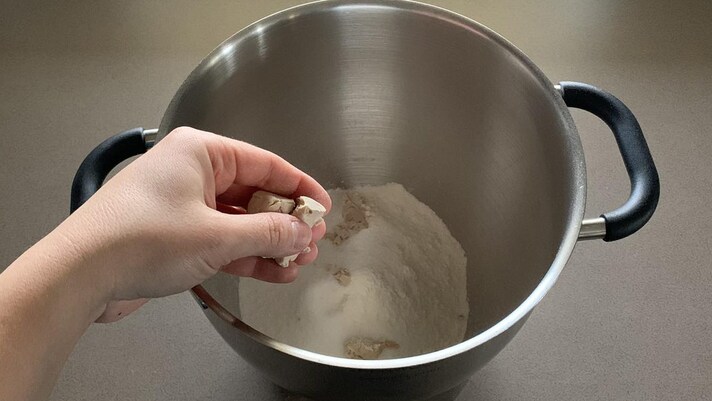
Collect the sifted flour in the mixer bowl with the granulated sugar and the crumbled fresh yeast.
Collect the sifted flour in the mixer bowl with the granulated sugar and the crumbled fresh yeast.
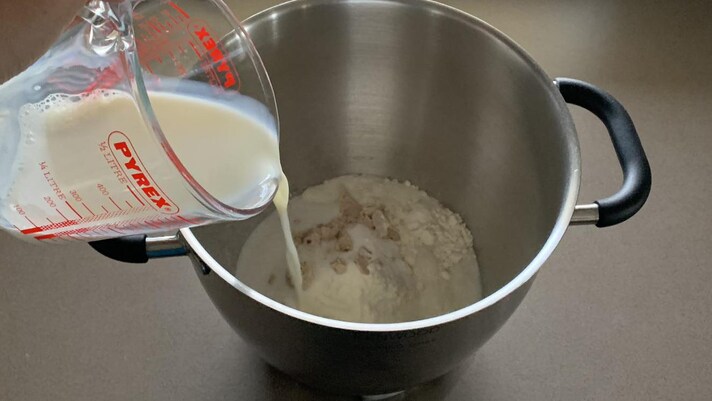
Pour in the warm milk.
Pour in the warm milk.
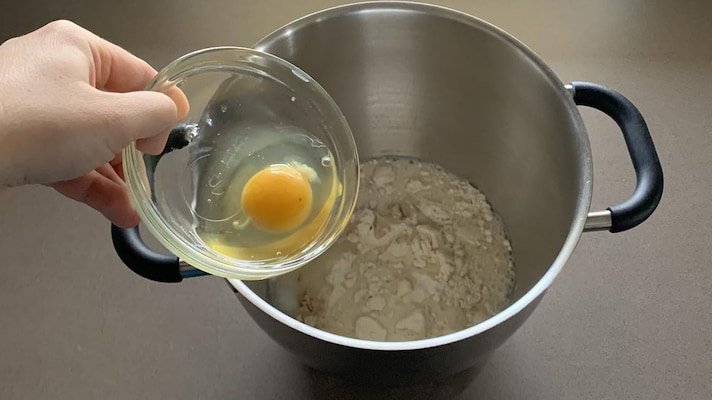
Add the egg.
Add the egg.
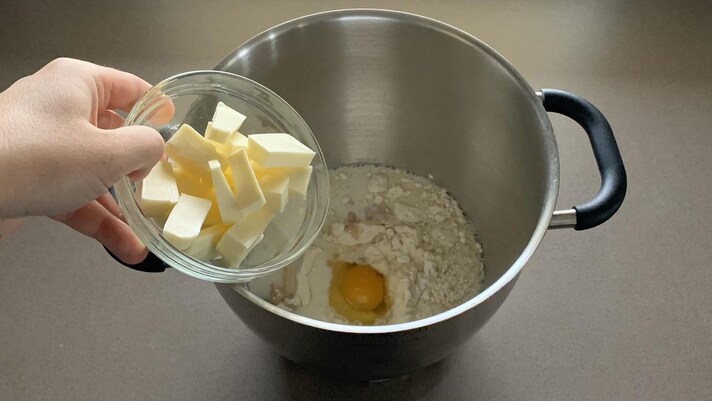
Then add the soft butter, cubed.
Then add the soft butter, cubed.
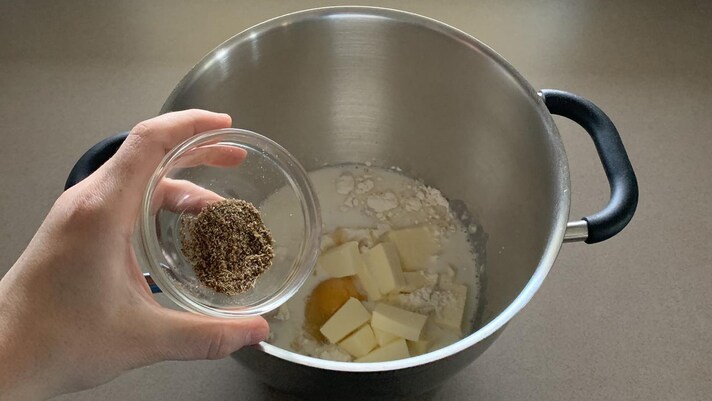
Flavor with ground cardamom seeds.
Flavor with ground cardamom seeds.
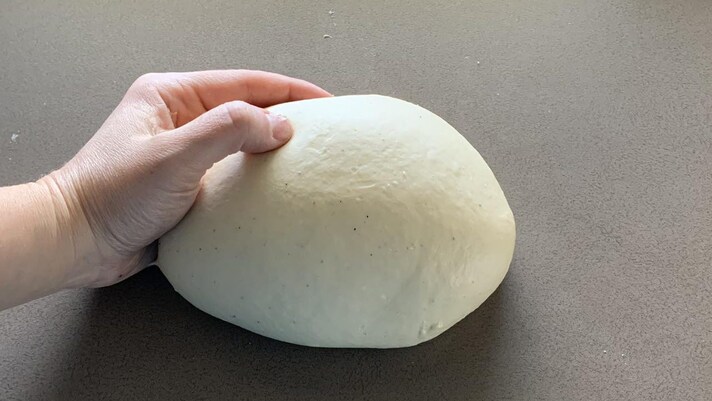
Work the ingredients with the hook, finish with the salt and continue mixing until you obtain a smooth and homogeneous dough.
Work the ingredients with the hook, finish with the salt and continue mixing until you obtain a smooth and homogeneous dough.
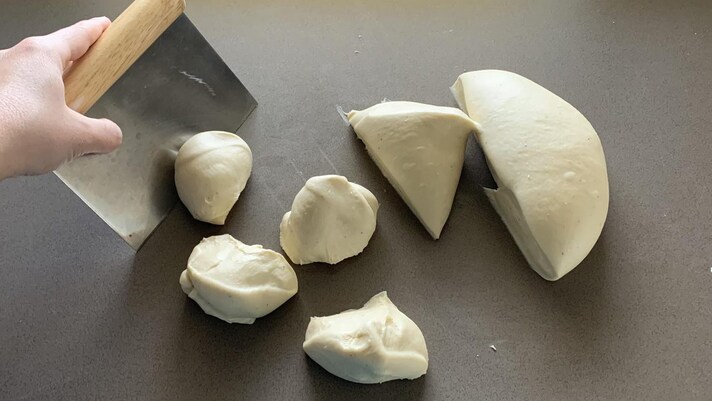
Divide it with the help of a tarocco into 14 pieces of the same weight.
Divide it with the help of a tarocco into 14 pieces of the same weight.
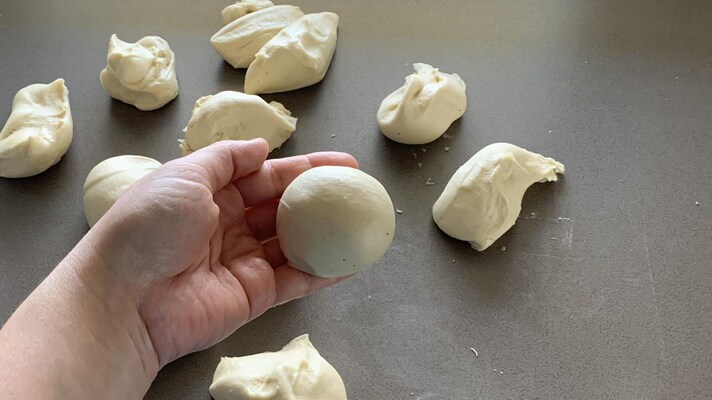
Work each portion of dough on the dough surface, so as to obtain many balls.
Work each portion of dough on the dough surface, so as to obtain many balls.
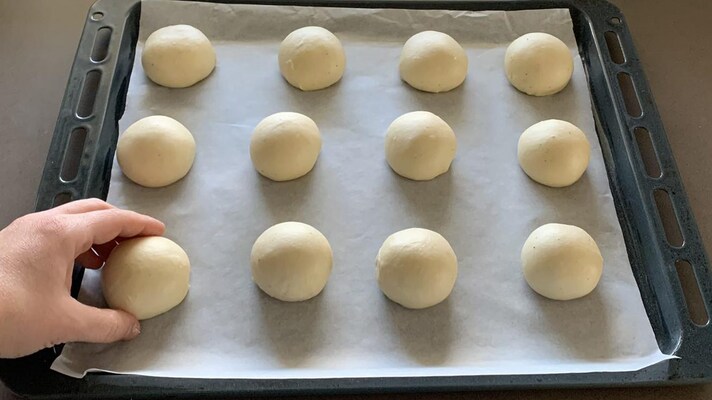
Place them on a baking tray lined with parchment paper.
Place them on a baking tray lined with parchment paper.
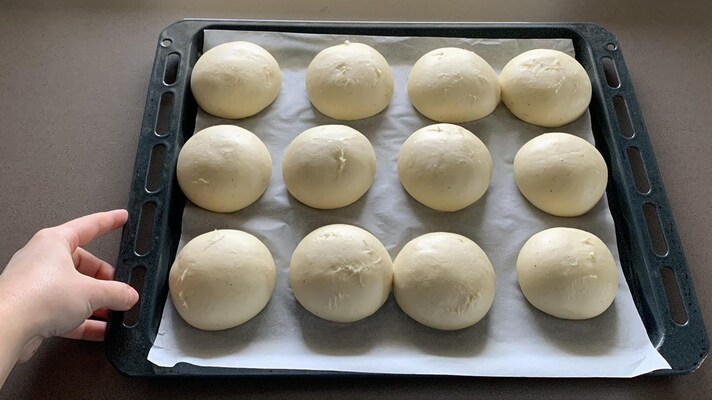
Cover with a clean cloth and let rise until they double in volume.
Cover with a clean cloth and let rise until they double in volume.
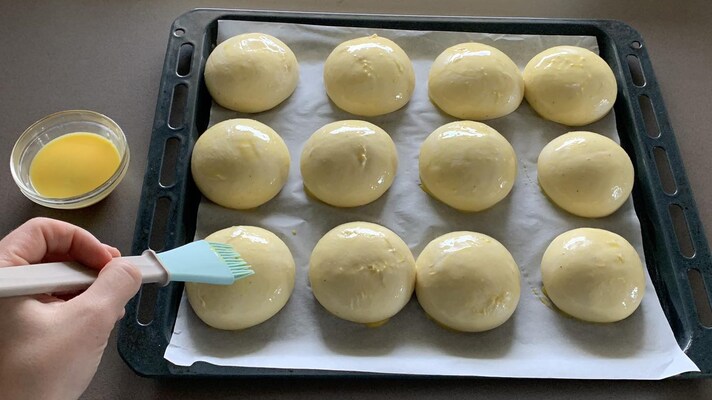
At this point, brush the leavened morsels with the egg, previously beaten with a spoonful of water, and bake in a preheated oven at 360°F/180°C for about 15 minutes. Once baked, remove the sweet rolls from the oven and let them cool on a rack.
At this point, brush the leavened morsels with the egg, previously beaten with a spoonful of water, and bake in a preheated oven at 360°F/180°C for about 15 minutes. Once baked, remove the sweet rolls from the oven and let them cool on a rack.
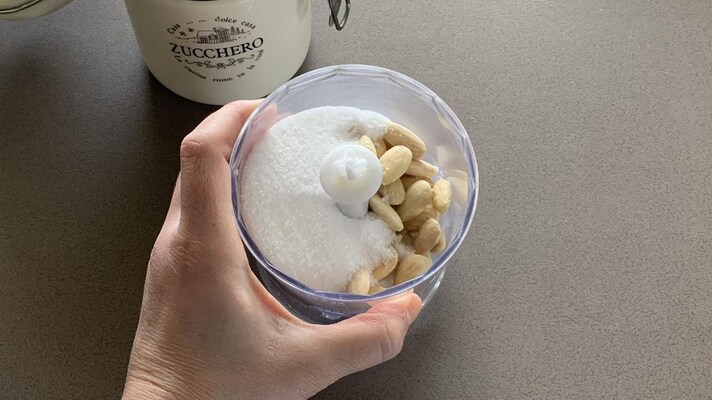
Meanwhile, prepare the almond cream: place the peeled almonds in the bowl of a mixer with the granulated sugar and the weather.
Meanwhile, prepare the almond cream: place the peeled almonds in the bowl of a mixer with the granulated sugar and the weather.
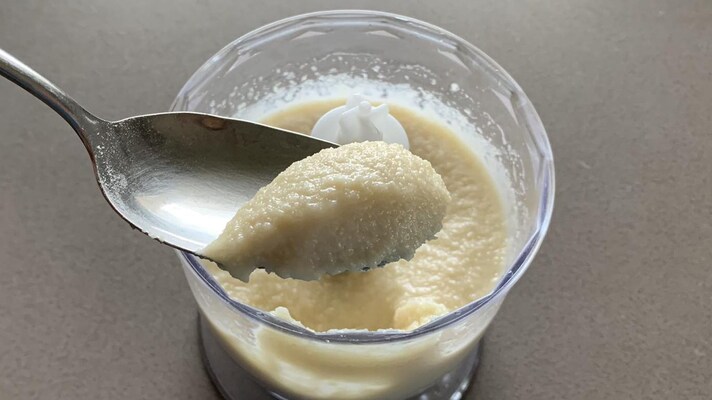
Blend everything well until you get a dense and grainy consistency.
Blend everything well until you get a dense and grainy consistency.
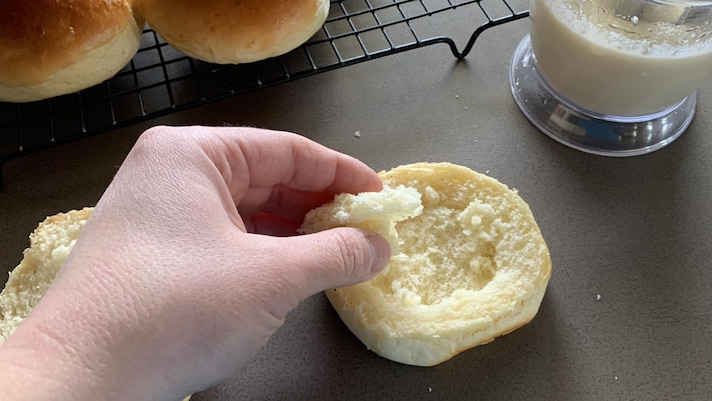
Once cooled, divide the rolls in half and remove a little of the crumb.
Once cooled, divide the rolls in half and remove a little of the crumb.
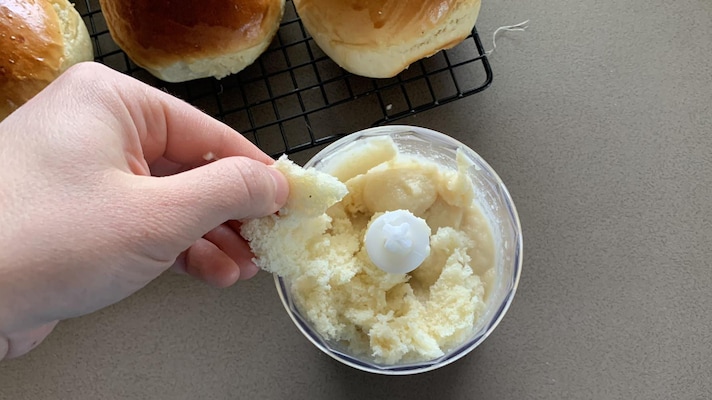
Add the breadcrumbs to the almond mixture, add the milk and blend everything again for a few moments.
Add the breadcrumbs to the almond mixture, add the milk and blend everything again for a few moments.
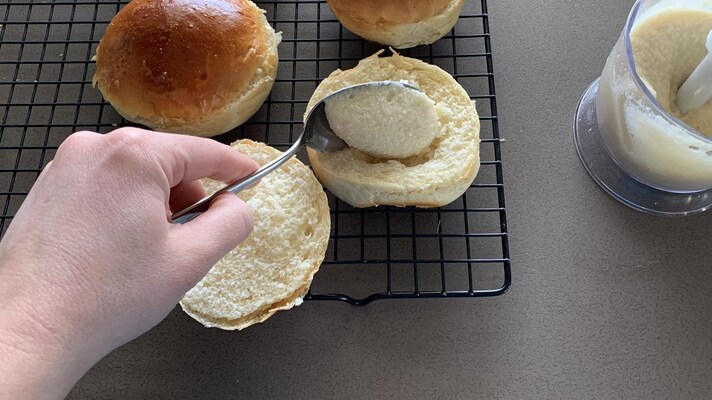
Stuff the semlor with the almond cream obtained.
Stuff the semlor with the almond cream obtained.
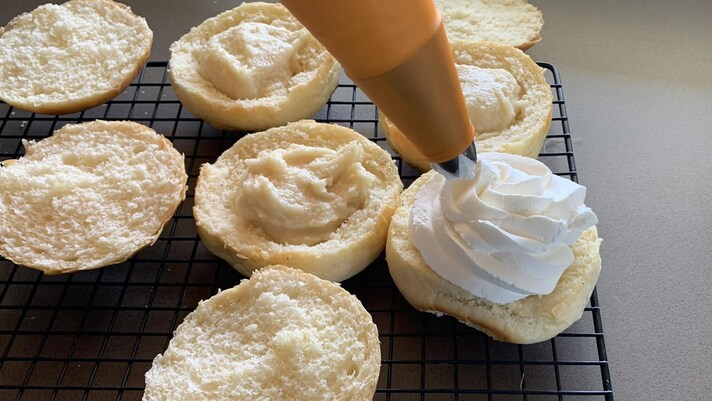
Cover with a dollop of freshly whipped cream.
Cover with a dollop of freshly whipped cream.
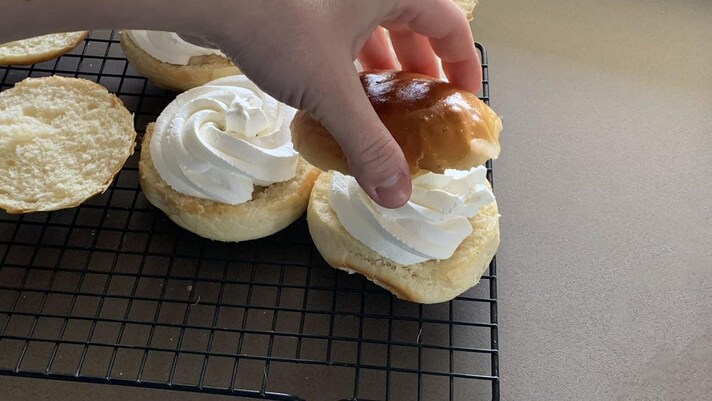
Gently arrange the reserved caps on the cream peak.
Gently arrange the reserved caps on the cream peak.

Sprinkle the semlor with powdered sugar. Enjoy!
Sprinkle the semlor with powdered sugar. Enjoy!
;Resize,width=767;)
;Resize,width=712;)


